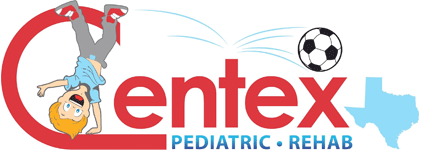Sore? “Who Cares!” Achy? “No problem.” Stiff? “No big deal.”
We…are Crossfitters. If we did not like to “feel the burn,” we would still be working out at a local gym using elliptical machines and machine weights. But when the feeling goes beyond the burn and enters into pain, or even worse – injury, how do you know if physical therapy can help?
Pain may be caused by weakness, tightness, or a muscular imbalance. Sometimes pain is caused by a combination of all three. These elements may cause inefficiencies within your workout, even if pain never occurs. Here are a few key points to help determine your physical therapy needs:
You have no idea why something hurts
If the WOD is a 1,000 meter row and 300 air squats, we can expect your hamstrings and quadriceps to be sore. Similarly, if the WOD is 50 kettle-ball swings and 25 pull-ups, your upper traps and lats will likely burn. However, if the WOD is snatch and toes-to-bar, you should not feel pain in your lower back. If you are feeling pain in a muscle group that should not be affected by the exercise, physical therapy can help determine the imbalance that may be causing that pain, and introduce you to stretches and exercises designed to eliminate the imbalance, thus ending the pain.
Pain persists longer than three days following a workout
Normally, the average person takes two or three days for sore muscles to start feeling better, especially if this person continues to stretch and workout. Pain, or soreness, for any longer can mean an injury. After completing a push-press workout, I felt intense pain in my lower back (an example of having no idea why something hurts). After three days of moving, stretching, and stabilizing exercises, my pain was not subsiding. I knew it was time to get scheduled for physical therapy, and yes, I will schedule time with my husband, Ryann, when needed. With three days of manual physical therapy, I was feeling much better and able to complete my clean and jerk PR without an ounce of pain!
The same body part is injured twice over a few week time period
This is really a no-brainer. By injuring the same body part twice, you are showing there is an imbalance or weakness that is causing your body to not exercise properly. Let’s say you have hamstring stiffness a few days following tire pulls, but it goes away. That’s great – this is what should happen. But if the next couple times after tire pulls you have that same hamstring pain, you would be smart to have a physical therapist help identify and address the issue. Soreness is good, it means you are working. Pain is not, it means you are doing something wrong. Do you really want to be in pain any longer?
The pain travels (i.e. lower back pain moves down your leg)
Pain should not travel. If you had shoulder soreness after the rope climb and then wake up with soreness traveling down your arm, manual therapy may be warranted. Same goes with lower back pain, it should not travel down your leg. If this is the case, you are a great candidate for physical therapy.
You swear you are doing everything right, but changes are just not occurring
Physical Therapists are experts in motion who treat patients of all ages to reduce pain and improve or restore mobility and improve stability. Maybe you are just not pushing yourself with weights or reps due to the fear of injuring or reinjuring yourself. You could be compensating during lifts or technical movements because you are off-balance and unable to stabilize or move through your needed range of motion. Physical therapy can assess these areas as well.
While CrossFit is a physically demanding workout, it should not cause any more soreness or pain than a regular man’s workout. Making sure you are CrossFit safe and CrossFit pain-free is a passion of Centex Rehabilitation. Let us know what you struggle with and we can perform a full evaluation. Call our office at 254-630-1186 today!
- Is Your Nighttime Routine The Reason For Your Neck Pain? - July 17, 2019
- Live Broadcast April 8, 2019 - April 15, 2019
- What’s Causing Your Knees to Hurt?It Might Not Be What You Think! - April 15, 2019
